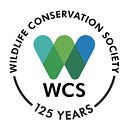WCS 3-Sentence Science
For Diversity in U.S. Parks, Head South
October 4, 2019
Each year, Wildlife Conservation Society scientists publish more than 300 peer-reviewed studies and papers. “WCS 3-Sentence Science” is a regular tip-sheet — in bite sized helpings — of some of this published work.
Here we present work by the WCS’s Kim Fisher and Eric Sanderson studying the relationship between geographic latitude and species diversity.
- Species richness of most taxa increases toward the equator, so researchers built latitude-enhanced species-area relationship models to predict species richness for amphibians, birds, freshwater fish, mammals, marine fish, plants, and reptiles in selected East Coast protected areas in the United States.
- The researchers demonstration showed that for two similarly sized US Protected Areas, the parcel l.25 degrees lower in latitude would likely have one more bird species, four more plant species, and an additional amphibian species.
- The latitude term added value to the species-area relationship models for most taxa and proved useful for conservation and urban planning in local to regional sized areas of the East Coast of the United States.
WCS Media Contact: Stephen Sautner, 7182203682, ssautner@wcs.org
Study and Journal: “Latitude-enhanced species-area relationships for conservation planning” from Landscape Ecology
WCS Co-Author(s): Kim Fisher, Spatial Analyst and Developer; Eric Sanderson, Senior Conservation Ecologist
For more information, contact: Stephen Sautner, 718–220–3682, ssautner@wcs.org.
